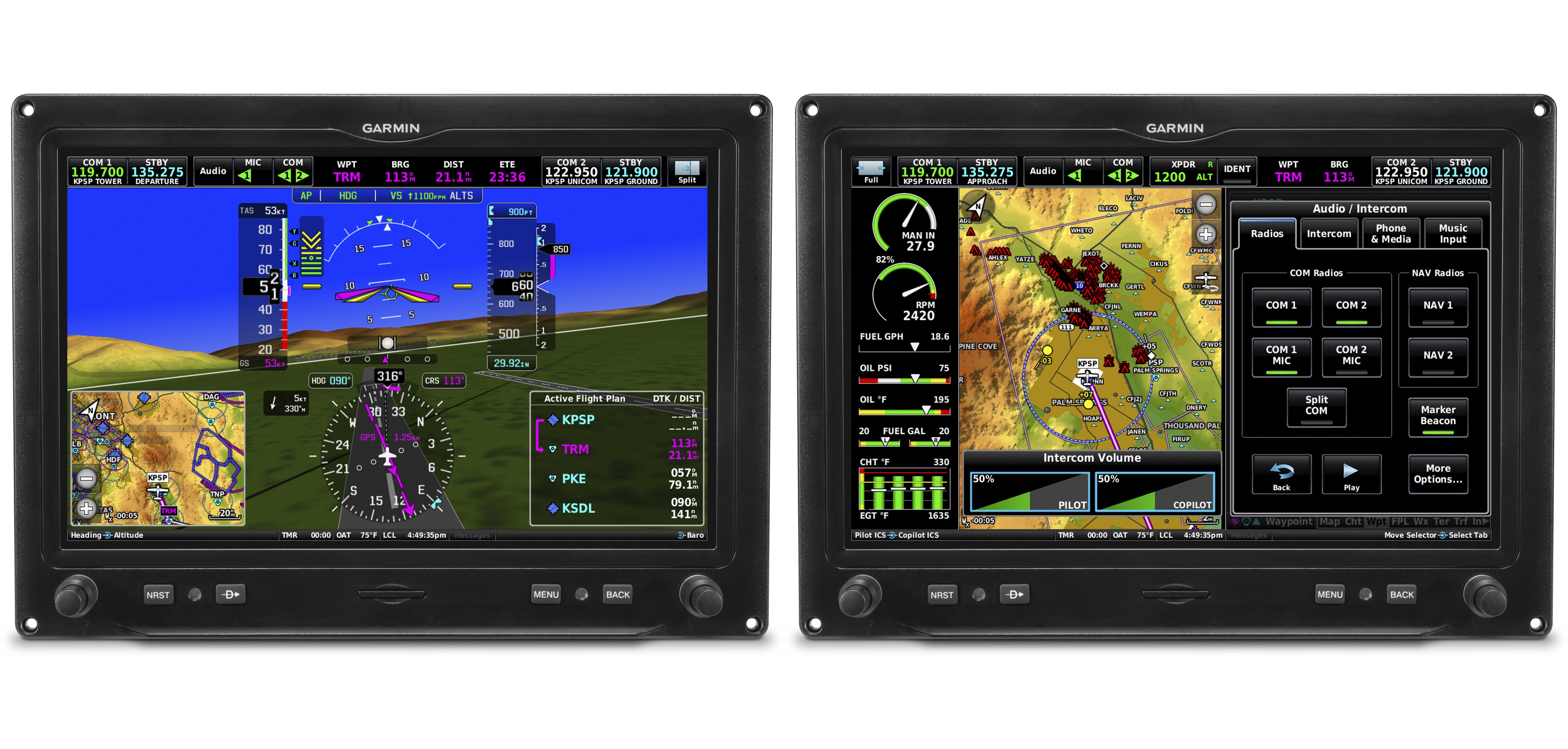Garmin today rolled out features for certified versions of its G3X Touch and G5 electronic instruments that have been live in the experimental world for some time. In addition, Garmin has new approved display configurations for the large-scale G3X Touch screen for production aircraft.
The first new feature is wireless engine-data streaming when the system is connected to the engine-monitoring module. “Aircraft performance, engine data and any exceedances that may occur are automatically stored on an SD card in the display. Available as an option, pilots can view real-time detailed engine information from G3X Touch within the Garmin Pilot app, which is sent wirelessly from the flight display to the app. Engine information and flight data logs, as well as exceedance information, is also automatically synced with the flyGarmin website for post-flight analysis,” according to Garmin.
For the G3X Touch, there are new approved configurations available. These include the ability to run twin 10.6-inch displays “configured as a Primary Flight Display (PFD) on the left and Multi-function display (MFD) on the right, with optional engine information displayed on either display.” The smaller version of the G3X Touch, which has a 7-inch screen, can be added to the right side of the panel, and as many as three G3X displays can be installed in any one aircraft. Finally, either size screen can be installed as a standalone option with the optional engine monitoring, which moves all the key flight and engine instruments onto one display. Garmin says this is “a natural addition to thousands of aircraft that already have a G5 electronic flight instrument installed in the panel.”
Garmin has also received approval for additional modules for the G3X Touch in certified applications. These include the GMA 245R remote audio panel and the GTR 20 remote comm. Both are controlled through the G3X display.
Lastly, Garmin has approval for updates to the small-form-factor G5 instrument that adds an outside-air sensor that provides OAT when flying and calculates density altitude when the aircraft is on the ground. These changes, which were debuted on the experimental version last year, also include new data fields, including air temperature, density altitude, wind direction and speed, headwind or tailwind and true airspeed.



































